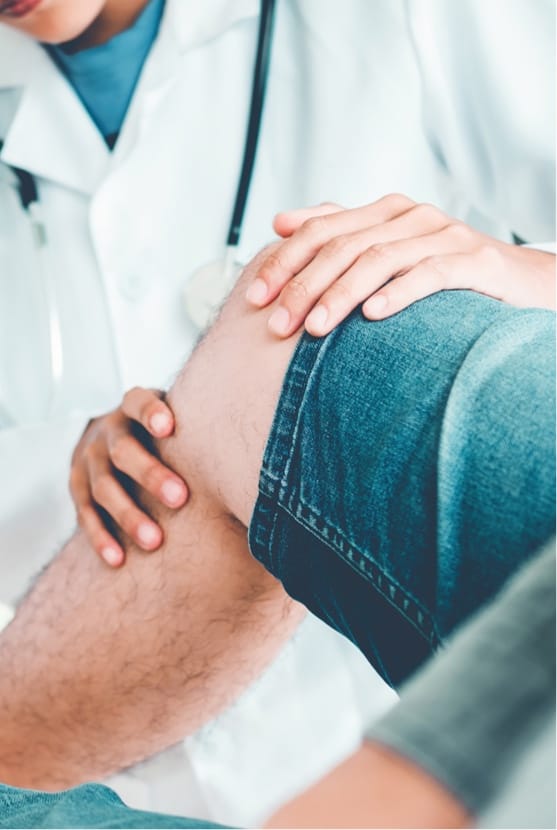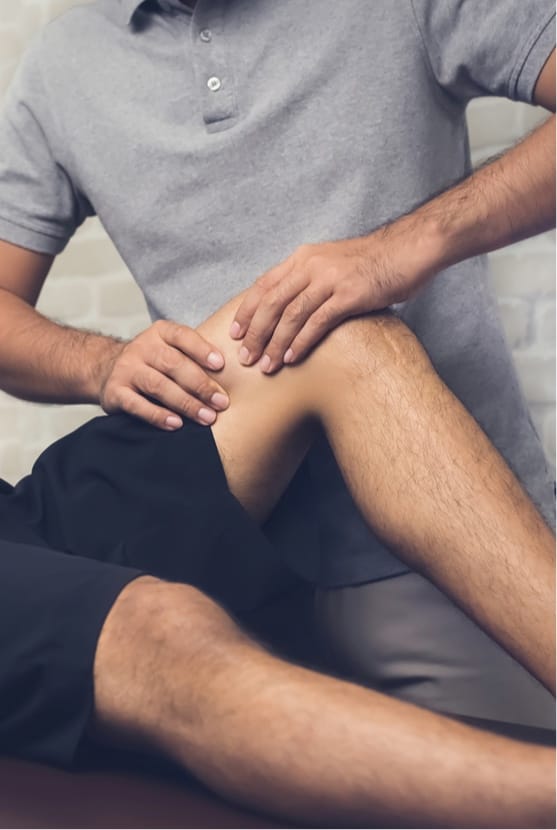What are ligament tears?
Ligaments are short bands of tough, fibrous, flexible connective tissue holding a joint together or connecting bones or cartilage. Stretched or torn ligaments are known as sprains. Torn ligaments or sprains are caused by injury when the body twists, falls, or is hit in a way that forces the knee structure out of position.
What are the symptoms of ligament tears in the knees?
If you have sustained knee ligament tears, you may experience:
- Sudden and severe pain
- A loud snap or pop during the injury
- A feeling of looseness in the joint
- Swelling within the first 24 hours
- Inability to put weight on the joint without pain, or at all

Types of ligament tears in the knees
There are four ligaments in each knee that are prone to injury. Knee ligament tears can occur in:
- Anterior cruciate ligament (ACL): This ligament connects the thigh bone (femur) to the shin bone (tibia). It is the most commonly injured knee ligament.
- Posterior cruciate ligament (PCL): The PCL is rarely injured except in automobile accidents. It also serves to link the femur to the tibia.
- Lateral collateral ligament: (LCL): It connects the femur to the fibula (smaller bone of the lower leg on the outer side of the knee).
- Medial collateral ligament (MCL): This ligament links the femur to the tibia on the inside of the knee.
How are knee ligament tears treated?
Dr. Yoon performs cutting-edge treatments for a wide range of sports injuries and diseases, including knee ligament tears. Depending on your particular case, his recommendations to treat ligament tears may include any or a combination of the following treatments:
Stem cell therapy: During an outpatient procedure, we use precise ultrasound or fluoroscopy guided imaging to inject custom concentrations of stem cells into the damaged ligament to enhance the body’s natural healing process.
Bone marrow concentrate (BMC): In this procedure we take bone marrow from a large bone in your body from which BMC is derived. The concentrate contains a rich mixture of stem cells that are able to replicate themselves into different types of tissue. When injected into the injured area, bone marrow concentrate promotes healing and aids in tissue growth and repair.
Platelet rich plasma (PRP): Platelet rich plasma is derived from your own blood. We draw a small amount of blood and spin it in a centrifuge to separate the platelet rich plasma from the red and white blood cells. Platelets contain growth factors to aid in healing. and they also attract and stimulate stem cells in the treatment site. PRP is injected into the injured site in quick, minimally-invasive procedure to reduce inflammation, promote healing, and relive pain.
Is there a way to help prevent ligament tears in the knee?
To reduce your risk of a knee ligament tear:
- Warm up with lighter activities first before engaging in more strenuous activities.
- Do regular stretching and strengthening exercises to keep your thigh muscles strong.
- Maintain flexibility.
- If you increase the intensity of your workout, do it slowly. Don’t make any sudden dramatic changes.


